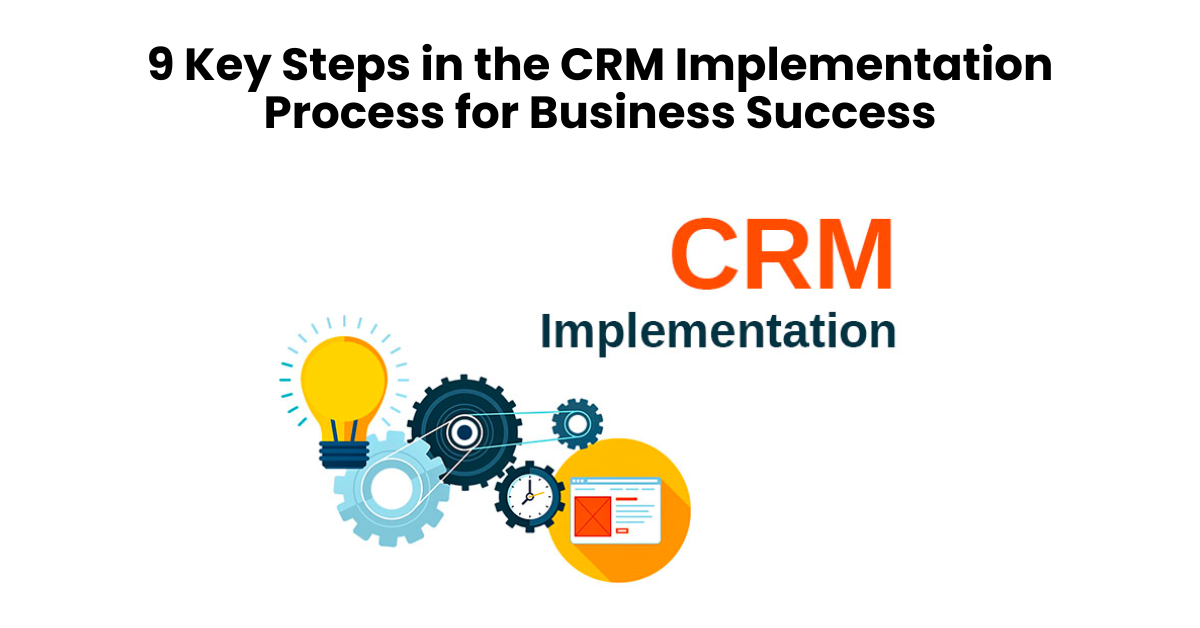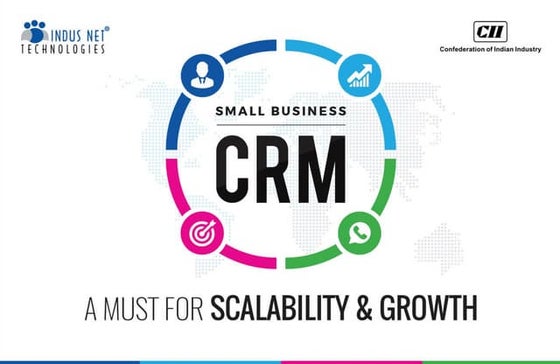
Small Business CRM Selection: Your Ultimate Guide to Choosing the Perfect Customer Relationship Management System
Running a small business is a whirlwind of activity. You’re constantly juggling tasks, from managing finances to marketing your products or services. One of the most critical aspects of running a successful small business is building and maintaining strong customer relationships. That’s where a Customer Relationship Management (CRM) system comes in. But with so many options available, choosing the right CRM for your small business can feel overwhelming. This comprehensive guide will walk you through the process, providing you with actionable tips and insights to make the best decision for your unique needs.
Why Your Small Business Needs a CRM
Before diving into the selection process, let’s explore why a CRM is essential for small businesses. In essence, a CRM system is a centralized hub for all your customer interactions and data. It helps you:
- Organize Customer Data: Store contact information, purchase history, communication logs, and more in one accessible location.
- Improve Customer Service: Provide faster, more personalized support by having all customer information readily available.
- Enhance Sales Efficiency: Automate tasks, track leads, and manage the sales pipeline to close more deals.
- Boost Marketing Effectiveness: Segment your audience, personalize marketing campaigns, and track their performance.
- Gain Valuable Insights: Analyze customer data to identify trends, understand customer behavior, and make data-driven decisions.
Without a CRM, customer information often gets scattered across spreadsheets, email inboxes, and sticky notes. This disorganization leads to missed opportunities, frustrated customers, and lost revenue. A CRM streamlines these processes, freeing up your time to focus on growing your business.
Key Features to Look for in a Small Business CRM
Not all CRM systems are created equal. The ideal CRM for your small business will depend on your specific needs and goals. However, some core features are essential for most businesses. Here’s a breakdown of what to look for:
Contact Management
This is the foundation of any CRM. Look for features that allow you to:
- Store comprehensive contact information: Name, address, phone number, email, social media profiles, etc.
- Segment contacts: Group contacts based on demographics, interests, purchase history, and other criteria.
- Import and export data: Easily transfer data from other systems or spreadsheets.
Sales Automation
Sales automation features streamline your sales process, saving time and increasing efficiency. Consider these features:
- Lead management: Track leads from initial contact to conversion.
- Sales pipeline management: Visualize your sales process and track the progress of deals.
- Task automation: Automate repetitive tasks like sending follow-up emails or scheduling calls.
- Sales reporting: Generate reports on sales performance, including revenue, deals closed, and sales cycle length.
Marketing Automation
Marketing automation features help you nurture leads, personalize customer interactions, and track the effectiveness of your marketing campaigns. Look for:
- Email marketing: Create and send targeted email campaigns.
- Marketing automation workflows: Automate email sequences based on customer behavior.
- Lead scoring: Prioritize leads based on their engagement and likelihood of conversion.
- Social media integration: Connect your CRM to your social media accounts to track engagement and manage leads.
Customer Service and Support
A good CRM should also help you provide excellent customer service. Look for features like:
- Ticketing system: Manage customer support requests and track their resolution.
- Knowledge base: Create a searchable database of FAQs, articles, and other resources.
- Live chat integration: Provide instant support through live chat.
- Customer self-service portal: Allow customers to access information and manage their accounts.
Reporting and Analytics
Data is your friend. The best CRM systems offer robust reporting and analytics capabilities, allowing you to gain insights into your business performance. Look for features like:
- Customizable dashboards: Display key metrics and KPIs in a clear and concise format.
- Pre-built reports: Access reports on sales, marketing, and customer service performance.
- Custom report generation: Create reports tailored to your specific needs.
- Data visualization: Use charts and graphs to visualize your data and identify trends.
Integrations
Your CRM should integrate seamlessly with other tools you use, such as your email marketing platform, accounting software, and website. Look for integrations with:
- Email marketing platforms: Mailchimp, Constant Contact, etc.
- Accounting software: QuickBooks, Xero, etc.
- Website platforms: WordPress, Shopify, etc.
- Social media platforms: Facebook, Twitter, LinkedIn, etc.
- Other business applications: Calendaring tools, project management software, etc.
Mobile Accessibility
In today’s mobile world, it’s crucial to have access to your CRM on the go. Look for a CRM with a mobile app or a responsive web design that works well on smartphones and tablets. This allows you to:
- Access customer data from anywhere.
- Update contact information on the fly.
- Manage leads and opportunities while traveling.
- Respond to customer inquiries quickly.
Step-by-Step Guide to Selecting the Right CRM for Your Small Business
Now that you know what to look for in a CRM, let’s walk through the selection process step-by-step. This will help you narrow down your choices and find the perfect fit for your business.
1. Define Your Needs and Goals
Before you start researching CRM systems, take some time to clearly define your needs and goals. What problems are you trying to solve? What do you want to achieve with a CRM?
Consider these questions:
- What are your current pain points? What tasks are time-consuming or inefficient? What areas of your business need improvement?
- What are your sales goals? How many leads do you want to generate? How many deals do you want to close?
- What are your marketing goals? How many new customers do you want to acquire? How can you improve customer engagement?
- What are your customer service goals? How can you improve customer satisfaction and loyalty?
- What features are essential? Make a list of must-have features based on your needs and goals.
By defining your needs and goals, you’ll have a clear understanding of what you’re looking for in a CRM, making it easier to evaluate different options.
2. Identify Your Budget
CRM systems come in a variety of price points, from free to enterprise-level. Determine how much you’re willing to spend on a CRM. Consider the following costs:
- Monthly or annual subscription fees: Most CRM systems use a subscription-based pricing model.
- Implementation costs: Some CRM systems require professional implementation services, which can add to the cost.
- Training costs: You may need to train your employees on how to use the CRM.
- Customization costs: If you need to customize the CRM to meet your specific needs, there may be additional costs.
Set a realistic budget and stick to it. Don’t overspend on features you don’t need. There are plenty of affordable CRM options for small businesses.
3. Research CRM Systems
Once you know your needs and budget, it’s time to start researching CRM systems. Use online resources like:
- CRM review websites: G2, Capterra, and TrustRadius provide reviews and ratings of CRM systems.
- Industry publications: Read articles and reviews from reputable industry publications.
- Vendor websites: Visit the websites of different CRM vendors to learn about their features and pricing.
- Social media: Check out social media groups and forums to see what other small business owners are using and recommending.
Create a shortlist of CRM systems that seem like a good fit for your needs. Consider the following factors:
- Features: Does the CRM offer the features you need?
- Pricing: Is the pricing affordable for your budget?
- Ease of use: Is the CRM easy to learn and use?
- Integrations: Does the CRM integrate with the other tools you use?
- Customer support: Does the vendor offer good customer support?
- Scalability: Can the CRM scale as your business grows?
4. Request Demos and Trials
Once you’ve narrowed down your shortlist, request demos or free trials of the CRM systems you’re considering. This will give you a hands-on experience with the software and allow you to see how it works in practice.
During the demo or trial, pay attention to:
- User interface: Is the interface intuitive and easy to navigate?
- Functionality: Does the CRM perform the tasks you need it to?
- Performance: Is the CRM fast and responsive?
- Customer support: How responsive is the vendor’s customer support?
- Integration: Test the integrations with your other tools.
Take notes and compare the different CRM systems based on your experience.
5. Evaluate and Compare
After you’ve tested the demos and trials, it’s time to evaluate and compare the different CRM systems. Create a spreadsheet or document to compare the features, pricing, and other factors of each CRM.
Consider these questions:
- Which CRM offers the features you need at an affordable price?
- Which CRM is the easiest to use and implement?
- Which CRM has the best customer support?
- Which CRM integrates seamlessly with your other tools?
- Which CRM is the best fit for your business?
Rank the CRM systems based on your evaluation and choose the one that best meets your needs.
6. Implement and Train
Once you’ve chosen a CRM, it’s time to implement it. This involves:
- Data migration: Transferring your existing customer data to the CRM.
- Configuration: Setting up the CRM to meet your specific needs.
- Training: Training your employees on how to use the CRM.
The vendor should provide support during the implementation process. Take advantage of any training resources they offer. Make sure your employees are comfortable using the CRM before going live.
7. Monitor and Optimize
After you’ve implemented the CRM, it’s important to monitor its performance and make adjustments as needed. Track key metrics such as:
- Sales performance: Track your sales pipeline, revenue, and deal closure rates.
- Marketing performance: Track the effectiveness of your marketing campaigns.
- Customer service performance: Track customer satisfaction and support request resolution times.
Regularly review your CRM data and identify areas for improvement. Make adjustments to your processes and workflows to optimize your CRM’s performance.
Top CRM Systems for Small Businesses
Here are some of the top CRM systems for small businesses, based on their features, pricing, and ease of use:
1. HubSpot CRM
HubSpot CRM is a popular choice for small businesses, offering a free version with a wide range of features, including contact management, sales pipeline management, and email marketing. It’s known for its user-friendly interface and robust integrations.
2. Zoho CRM
Zoho CRM offers a comprehensive suite of features at a competitive price. It’s a good option for businesses that need a CRM with advanced sales automation, marketing automation, and customer service capabilities.
3. Pipedrive
Pipedrive is a sales-focused CRM that’s designed to help sales teams manage their leads and close deals. It’s known for its intuitive interface and visual sales pipeline.
4. Freshsales
Freshsales is another popular CRM that offers a range of features, including sales automation, marketing automation, and customer service. It’s a good option for businesses that want a CRM with a focus on customer engagement.
5. Salesforce Essentials
Salesforce Essentials is a simplified version of the Salesforce CRM, designed for small businesses. It offers a range of features, including contact management, sales pipeline management, and customer service. However, it can be more complex to set up and use compared to other options.
Note: The availability and features of these CRM systems, and the best choice for your business, can change. Always check the latest information on vendor websites.
Tips for a Smooth CRM Selection and Implementation
Here are some extra tips to help you navigate the CRM selection and implementation process:
- Involve your team: Get input from your sales, marketing, and customer service teams to ensure the CRM meets their needs.
- Start small: Don’t try to implement every feature at once. Start with the essential features and gradually add more as you become more comfortable with the system.
- Clean up your data: Before migrating your data to the CRM, clean up your existing customer data to ensure accuracy.
- Provide ongoing training: Provide ongoing training to your employees to ensure they’re using the CRM effectively.
- Get help from the vendor: Don’t hesitate to reach out to the vendor for support during the implementation and ongoing use of the CRM.
- Be patient: Implementing a CRM takes time and effort. Be patient and persistent, and you’ll eventually see the benefits.
- Don’t be afraid to switch: If the CRM you choose isn’t meeting your needs, don’t be afraid to switch to a different one. It’s better to find a CRM that’s the right fit for your business than to stick with one that’s not.
Conclusion
Choosing the right CRM is a significant decision for any small business. By following these tips, you can select a CRM that will help you organize your customer data, improve customer service, enhance sales efficiency, and grow your business. Take your time, do your research, and choose a CRM that’s the right fit for your specific needs.
Implementing a CRM is a journey, not a destination. Continuously evaluate your CRM’s performance and make adjustments as needed to ensure it’s helping you achieve your business goals. With the right CRM in place, you’ll be well-equipped to build stronger customer relationships and drive long-term success.

